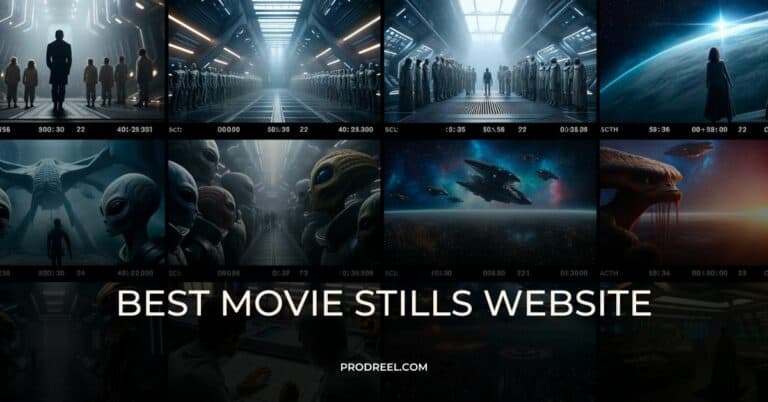What is a video production brief?
A video production brief is essentially a blueprint or a guide for creating a video. It’s a document that outlines the important aspects of a video project like the purpose or objective of the video, the target audience, the key message to be conveyed, the tone and style, the budget, and the timeline.
This brief helps ensure that everyone involved in the project, including clients, producers, and other team members, understand what’s expected and are on the same page. It’s a crucial tool in planning and executing a successful video production, helping to avoid misunderstandings and ensure that the final product meets the desired goals.
Why is video production brief important?
1. Understanding the Video’s Objectives and Target Audience:
A well-written brief is vital for the producer to comprehend the video’s objectives and target audience. It illuminates the purpose behind the video – be it promotional, educational, or entertainment-oriented. Knowing the video’s goal helps inform the approach to scripting, directing, filming, and editing. Similarly, a clear understanding of the target audience enables the producer to tailor the content, style, and tone to resonate with viewers, thus enhancing viewer engagement and ensuring the video’s success.
2. Meeting the Client’s Expectations:
The brief acts as a roadmap to guide the producer in creating a video that meets the client’s expectations. It provides clear guidelines on the vision for the video, the tone, the message, and the desired viewer reaction. This helps the producer to align their creative decisions with the client’s expectations, reducing the risk of dissatisfaction or need for major revisions.
3. Creating an Effective Video:
When a brief is well-structured and detailed, it allows the producer to construct a video that effectively achieves its goals. The brief contains crucial details like the key message to be conveyed, the call-to-action for the audience, and the success metrics. These elements provide a clear vision for what the video needs to accomplish, ensuring that each component of the video – from the script to the final edit – works towards fulfilling those objectives.
4. Resource Planning:
With a well-written brief, the producer has all the necessary resources at hand to complete the project. It gives an overview of the budget, timeline, necessary equipment, and personnel needed for the project. This enables effective planning and management of resources, preventing last-minute hurdles or resource shortages that could compromise the quality of the video.
5. Realistic Project Timeline:
A well-crafted brief provides a comprehensive timeline for the project. It outlines the deadlines for each stage of the production process, from pre-production meetings to post-production edits. This helps ensure a realistic schedule is set and adhered to, preventing delays that could increase costs or cause frustration.
6. Maintaining Client-Producer Alignment:
The brief ensures that the producer and client are on the same page throughout the project. It acts as a reference document that both parties can return to, facilitating clear communication and understanding. This prevents misinterpretations or deviations from the agreed-upon vision, maintaining a smooth working relationship throughout the project.
7. Adequate Project Budget:
The brief helps ensure that the project budget is adequate. It provides a comprehensive breakdown of where the funds will be allocated, whether it’s towards equipment, talent, location, or post-production services. This allows for transparency between the client and producer, and helps manage financial expectations and prevent budget overruns.
8. Preventing Misunderstandings:
Misunderstandings between the producer and client can lead to wasted time, resources, and frustration. A well-written brief reduces this risk by clarifying all project details. It acts as a contract of sorts, establishing the project scope, responsibilities, expectations, and guidelines. Any concerns or questions can be addressed and resolved by referring back to the brief.
9. Fostering Creativity and Innovation:
While a brief provides guidelines, it can also inspire creativity and innovation. It provides the context, objective, and constraints, but how the producer chooses to achieve these can vary greatly. The brief can challenge the producer to think outside the box, experiment with new styles, and create a video that is truly unique and memorable.
10. Achieving Video Goals:
Finally, a well-detailed brief helps the producer to produce a video that is not only creative and engaging but also effective in achieving its goals. Whether the goal is to increase brand awareness, drive sales
The different sections of a typical video production brief
1. Project Overview:
The project overview section of a video production brief encapsulates the main purpose, goals, and objectives of the project. It outlines what the video seeks to achieve, whether it’s promoting a product, conveying a brand story, or driving engagement. This section helps to set the tone for the rest of the brief, providing a broad context for all other details. A clear project overview is critical for guiding the overall approach to video production and ensuring that all stakeholders share a common understanding of the project’s aim.
2. Brief Suitability:
Brief suitability refers to how well the outlined brief aligns with the larger marketing strategy or branding guidelines. This section should outline how the proposed video fits into the wider marketing campaign, brand image, or corporate ethos. A video that aligns with a company’s broader goals and identity ensures consistent messaging and helps to reinforce brand recognition among the target audience.
3. Target Audience:
In this section, a detailed profile of the target audience is crafted. It identifies who the video is for – their age, interests, behavior, challenges, and aspirations. Understanding the target audience is key to creating a video that resonates with them, as it informs the tone, style, content, and even the platform where the video will be distributed. The more specific you can be about your audience, the more effectively you can engage them.
4. Video Format:
The video format section outlines the type of video to be produced – it could be a documentary, a product demo, an explainer video, a testimonial, or even a narrative film. The choice of format depends on the project’s objectives, the message to be conveyed, and the preferences of the target audience. The format determines the structure of the video, the filming techniques used, and the overall storytelling approach.
5. Budget:
The budget section outlines the financial resources available for the project. It should include details on allocation for different stages of video production, such as pre-production, production, and post-production. This part of the brief allows the production team to understand what resources they have at their disposal, which helps them plan efficiently and manage costs effectively.
6. Deadlines:
This section establishes the timeline for the project, including key milestones like script approval, completion of filming, post-production, and final delivery. Clearly defined deadlines ensure that all project members are aligned on expectations and help maintain a smooth, timely workflow, preventing potential delays that could increase costs.
7. Creativity Point of View:
The creativity point of view encapsulates the desired tone, style, and creative direction for the video. This might include the emotional response you want to evoke, the narrative style, visual aesthetics, color schemes, or specific stylistic inspirations.
If you are looking for references movie stills for your mood board or storyboard, check out the suggested movie stills website to make your creative vision stand out.
This part of the brief helps to guide the creative team in bringing the video concept to life in a way that aligns with the project’s objectives.
8. Audio & Visual Clips:
This section outlines any specific audio or visual elements that need to be included in the video. This could include branding elements, logos, specific product shots, voiceovers, music, or sound effects. Providing this information helps the production team plan their shots and editing process effectively and ensures that all required elements are included in the final product.
9. Brief Sample:
A brief sample provides an example of a previously created brief that was successful, to serve as a guide or inspiration for the current project. It gives the production team a concrete understanding of what’s expected in terms of content, style, tone, and overall approach.
10. Collaboration Tools:
The collaboration tools section specifies the platforms or software that will be used to coordinate and communicate during the project. These tools could range from project management software to video conferencing tools
How to create and structure your video production brief
Step 1: Overview
The first step in creating a video production brief is crafting an overview. This should provide a summary of what the project is about and why it is being undertaken.
It can be helpful to include key pieces of information such as the project’s title, the team or individuals involved, and any major themes or ideas that will be central to the project.
This initial overview helps to set the stage for the more detailed information to come.
Step 2: The Business Description
The second step involves providing a description of the business or organization commissioning the video.
This could include details about the company’s history, mission, values, products or services, and key achievements.
The business description gives the video production team a better understanding of the organization’s identity and culture, which can inform the approach to the video project.
Step 3: Video Project Objectives
Step three is about defining the objectives of the video project. What is the video intended to achieve?
This might be increasing awareness of a new product, conveying the company’s values to a wider audience, or educating viewers about a particular topic.
The objectives should be specific, measurable, achievable, relevant, and time-bound (SMART) to provide a clear direction for the project.
Step 4: Target Audience
Step four requires defining the target audience for the video. Who are the viewers that the video is intended to reach and engage?
This section should detail the demographic characteristics of the audience, their interests, their challenges, and their media consumption habits.
Understanding the target audience is key to creating a video that will resonate and engage effectively.
Step 5: The Timeline
The fifth step involves creating a timeline for the video production process.
This includes setting deadlines for each stage of the project, from initial brainstorming and scriptwriting to filming, editing, and distribution.
A clear timeline helps to ensure that all team members know what is expected and when, and keeps the project on track to meet its deadlines.
Step 6: Technical Specifications, Distribution Channels, and Standards
In this crucial step, the technical specifications of the video are defined. This includes the output dimension or resolution of the video.
For instance, if the video is intended for a website or social media, it might need to be in Full HD (1920×1080 pixels) or 4K (3840×2160 pixels).
For broadcast purposes, there may be specific dimensions to adhere to according to industry standards or the requirements of the broadcaster.
Also defined here are aspects such as frame rate (e.g., 24, 30, 60 frames per second), video codec (e.g., H.264, ProRes), audio quality, and file format (e.g., MP4, MOV).
These technical details can greatly influence the quality and compatibility of the final video, so it’s important they’re tailored to the needs of the project and the capabilities of the distribution channels.
It should also detail where the video will be shared, whether that’s on social media, the company’s website, or broadcast TV.
Outlining any applicable standards or guidelines, such as branding guidelines or accessibility requirements, ensures that the video will meet all necessary criteria.
Step 7: Tone of Voice
In step seven, the tone of voice for the video is defined.
This should align with the business’s brand identity and the expectations of the target audience. The tone could be formal, casual, humorous, serious, inspirational, or something else entirely.
The tone of voice will guide the scripting, filming, and editing process, helping to ensure that the video’s message is conveyed in a way that will resonate with viewers.
Step 8: Project Overview and Goals
Step eight revisits and expands on the project overview and goals. With the benefit of the information outlined in the previous steps, the project’s goals should be clearly defined and aligned with the overall objectives of the business.
This step should also provide an overview of the video content, outlining the key messages, the intended viewer takeaway, and the call-to-action.
Step 9: Budget Guide
Step nine involves outlining the budget for the project. The budget guide should detail the funds available for the project and provide a breakdown of how those funds will be allocated across different areas, such as scriptwriting, filming, editing, and distribution.
This helps to ensure that resources are used efficiently and that the project’s ambitions are feasible within the budget constraints.
Step 10: Approval Process
The final step in creating a video production brief is establishing the approval process. This outlines who will need to approve the video at each stage of production, from the initial concept and script to the final edit.
A clear approval process helps to ensure that everyone is satisfied with the video and that it meets all necessary criteria before it is distributed.
Video Production Brief Template
| Step | Description |
|---|---|
| Overview | Craft an overview with key information like project’s title, team involved, major themes or ideas. This sets the stage for more detailed information. |
| Business Description | Include a description of the business or organization commissioning the video. Highlight the company’s history, mission, values, products/services, and key achievements. |
| Video Project Objectives | Define the objectives of the video project. They should be specific, measurable, achievable, relevant, and time-bound (SMART). |
| Target Audience | Define the target audience, detailing their demographics, interests, challenges, and media consumption habits. |
| Timeline | Create a timeline for the video production process, including deadlines for each stage of the project. |
| Technical Specifications, Distribution Channels, and Standards | Define the technical specifications like video dimension, frame rate, video codec, audio quality, and file format. Detail distribution channels and any applicable standards or guidelines. |
| Tone of Voice | Define the tone of voice that aligns with the business’s brand identity and the expectations of the target audience. |
| Project Overview and Goals | Revisit the project’s goals with a more detailed overview of the video content. Outline the key messages, viewer takeaway, and call-to-action. |
| Budget Guide | Outline the budget for the project, detailing the allocation of funds across different areas of the project. |
| Approval Process | Establish the approval process, outlining who will need to approve the video at each stage of production. |
Frequently Asked Questions
A video production brief is a foundational document that outlines the key details and objectives of a video project, providing guidance to everyone involved in the production process.
A video production brief should include the project overview, business description, project objectives, target audience, timeline, technical specifications, tone of voice, project goals, budget, approval process, and details of collaboration with stakeholders.
A video production brief template serves as a structured guide to help you cover all necessary aspects of a video project, ensuring that important details are not overlooked and that everyone involved in the project is aligned.
To create a video production brief, start with an overview of the project, then provide details on the business, project objectives, target audience, timeline, technical specs, tone, goals, budget, approval process, and any relevant collaboration tools. Make sure the brief aligns with the overall business goals and appeals to the target audience.
The timeline for a video production brief outlines key milestones and deadlines in the production process, from the initial planning stages through to the video’s final delivery. This helps to ensure the project stays on track and is completed in a timely manner.
A video production brief is usually a written document, but the specific format can vary. It might be a simple Word document, a PowerPoint presentation, or a structured form in a project management tool. Regardless of the format, it should be clear, concise, and easy for all stakeholders to understand.
Collaboration with stakeholders in a video production brief involves sharing the brief, discussing its contents, and inviting feedback. This could be done through meetings, video calls, or collaboration tools like Google Docs or project management software.
The deadline for a video production brief is typically set ahead of the start of the video production process. This allows ample time for review, feedback, and any necessary revisions to the brief before production begins.
You can get feedback on your video production brief by sharing it with all relevant stakeholders, such as team members, clients, or other partners, and inviting their input. This can be done through email, meetings, or collaborative tools that allow for comments and revisions.
Inspiration for a video production brief can come from many sources, such as successful videos in your industry, feedback from your target audience, brainstorming sessions with your team, or even aspects of your own brand or product that you want to highlight. It’s also helpful to review successful brief samples to understand what works.







